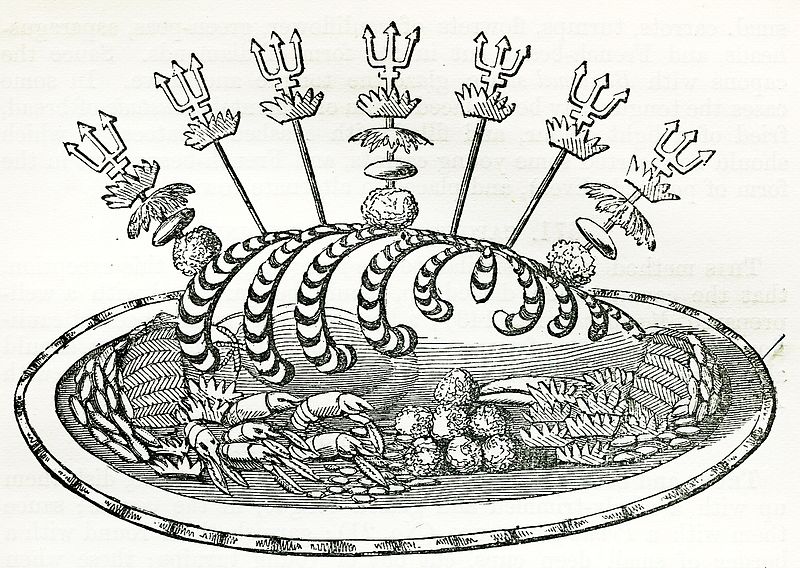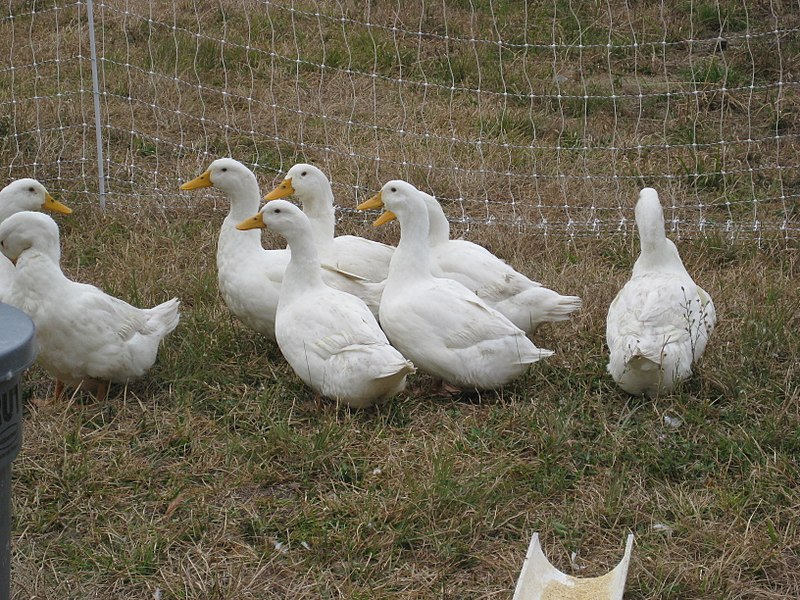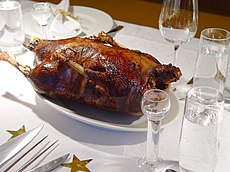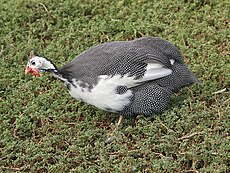2.2.1: Introduction to Poultry Identification
- Page ID
- 64447
\( \newcommand{\vecs}[1]{\overset { \scriptstyle \rightharpoonup} {\mathbf{#1}} } \)
\( \newcommand{\vecd}[1]{\overset{-\!-\!\rightharpoonup}{\vphantom{a}\smash {#1}}} \)
\( \newcommand{\id}{\mathrm{id}}\) \( \newcommand{\Span}{\mathrm{span}}\)
( \newcommand{\kernel}{\mathrm{null}\,}\) \( \newcommand{\range}{\mathrm{range}\,}\)
\( \newcommand{\RealPart}{\mathrm{Re}}\) \( \newcommand{\ImaginaryPart}{\mathrm{Im}}\)
\( \newcommand{\Argument}{\mathrm{Arg}}\) \( \newcommand{\norm}[1]{\| #1 \|}\)
\( \newcommand{\inner}[2]{\langle #1, #2 \rangle}\)
\( \newcommand{\Span}{\mathrm{span}}\)
\( \newcommand{\id}{\mathrm{id}}\)
\( \newcommand{\Span}{\mathrm{span}}\)
\( \newcommand{\kernel}{\mathrm{null}\,}\)
\( \newcommand{\range}{\mathrm{range}\,}\)
\( \newcommand{\RealPart}{\mathrm{Re}}\)
\( \newcommand{\ImaginaryPart}{\mathrm{Im}}\)
\( \newcommand{\Argument}{\mathrm{Arg}}\)
\( \newcommand{\norm}[1]{\| #1 \|}\)
\( \newcommand{\inner}[2]{\langle #1, #2 \rangle}\)
\( \newcommand{\Span}{\mathrm{span}}\) \( \newcommand{\AA}{\unicode[.8,0]{x212B}}\)
\( \newcommand{\vectorA}[1]{\vec{#1}} % arrow\)
\( \newcommand{\vectorAt}[1]{\vec{\text{#1}}} % arrow\)
\( \newcommand{\vectorB}[1]{\overset { \scriptstyle \rightharpoonup} {\mathbf{#1}} } \)
\( \newcommand{\vectorC}[1]{\textbf{#1}} \)
\( \newcommand{\vectorD}[1]{\overrightarrow{#1}} \)
\( \newcommand{\vectorDt}[1]{\overrightarrow{\text{#1}}} \)
\( \newcommand{\vectE}[1]{\overset{-\!-\!\rightharpoonup}{\vphantom{a}\smash{\mathbf {#1}}}} \)
\( \newcommand{\vecs}[1]{\overset { \scriptstyle \rightharpoonup} {\mathbf{#1}} } \)
\( \newcommand{\vecd}[1]{\overset{-\!-\!\rightharpoonup}{\vphantom{a}\smash {#1}}} \)
\(\newcommand{\avec}{\mathbf a}\) \(\newcommand{\bvec}{\mathbf b}\) \(\newcommand{\cvec}{\mathbf c}\) \(\newcommand{\dvec}{\mathbf d}\) \(\newcommand{\dtil}{\widetilde{\mathbf d}}\) \(\newcommand{\evec}{\mathbf e}\) \(\newcommand{\fvec}{\mathbf f}\) \(\newcommand{\nvec}{\mathbf n}\) \(\newcommand{\pvec}{\mathbf p}\) \(\newcommand{\qvec}{\mathbf q}\) \(\newcommand{\svec}{\mathbf s}\) \(\newcommand{\tvec}{\mathbf t}\) \(\newcommand{\uvec}{\mathbf u}\) \(\newcommand{\vvec}{\mathbf v}\) \(\newcommand{\wvec}{\mathbf w}\) \(\newcommand{\xvec}{\mathbf x}\) \(\newcommand{\yvec}{\mathbf y}\) \(\newcommand{\zvec}{\mathbf z}\) \(\newcommand{\rvec}{\mathbf r}\) \(\newcommand{\mvec}{\mathbf m}\) \(\newcommand{\zerovec}{\mathbf 0}\) \(\newcommand{\onevec}{\mathbf 1}\) \(\newcommand{\real}{\mathbb R}\) \(\newcommand{\twovec}[2]{\left[\begin{array}{r}#1 \\ #2 \end{array}\right]}\) \(\newcommand{\ctwovec}[2]{\left[\begin{array}{c}#1 \\ #2 \end{array}\right]}\) \(\newcommand{\threevec}[3]{\left[\begin{array}{r}#1 \\ #2 \\ #3 \end{array}\right]}\) \(\newcommand{\cthreevec}[3]{\left[\begin{array}{c}#1 \\ #2 \\ #3 \end{array}\right]}\) \(\newcommand{\fourvec}[4]{\left[\begin{array}{r}#1 \\ #2 \\ #3 \\ #4 \end{array}\right]}\) \(\newcommand{\cfourvec}[4]{\left[\begin{array}{c}#1 \\ #2 \\ #3 \\ #4 \end{array}\right]}\) \(\newcommand{\fivevec}[5]{\left[\begin{array}{r}#1 \\ #2 \\ #3 \\ #4 \\ #5 \\ \end{array}\right]}\) \(\newcommand{\cfivevec}[5]{\left[\begin{array}{c}#1 \\ #2 \\ #3 \\ #4 \\ #5 \\ \end{array}\right]}\) \(\newcommand{\mattwo}[4]{\left[\begin{array}{rr}#1 \amp #2 \\ #3 \amp #4 \\ \end{array}\right]}\) \(\newcommand{\laspan}[1]{\text{Span}\{#1\}}\) \(\newcommand{\bcal}{\cal B}\) \(\newcommand{\ccal}{\cal C}\) \(\newcommand{\scal}{\cal S}\) \(\newcommand{\wcal}{\cal W}\) \(\newcommand{\ecal}{\cal E}\) \(\newcommand{\coords}[2]{\left\{#1\right\}_{#2}}\) \(\newcommand{\gray}[1]{\color{gray}{#1}}\) \(\newcommand{\lgray}[1]{\color{lightgray}{#1}}\) \(\newcommand{\rank}{\operatorname{rank}}\) \(\newcommand{\row}{\text{Row}}\) \(\newcommand{\col}{\text{Col}}\) \(\renewcommand{\row}{\text{Row}}\) \(\newcommand{\nul}{\text{Nul}}\) \(\newcommand{\var}{\text{Var}}\) \(\newcommand{\corr}{\text{corr}}\) \(\newcommand{\len}[1]{\left|#1\right|}\) \(\newcommand{\bbar}{\overline{\bvec}}\) \(\newcommand{\bhat}{\widehat{\bvec}}\) \(\newcommand{\bperp}{\bvec^\perp}\) \(\newcommand{\xhat}{\widehat{\xvec}}\) \(\newcommand{\vhat}{\widehat{\vvec}}\) \(\newcommand{\uhat}{\widehat{\uvec}}\) \(\newcommand{\what}{\widehat{\wvec}}\) \(\newcommand{\Sighat}{\widehat{\Sigma}}\) \(\newcommand{\lt}{<}\) \(\newcommand{\gt}{>}\) \(\newcommand{\amp}{&}\) \(\definecolor{fillinmathshade}{gray}{0.9}\)Market Forms of Poultry
Poultry, regardless of type, is organized for the consumer in 4 categories that get progressively more specialized and specific in meaning as they go.
Kind: This term refers to the species of bird, e.g. turkey, chicken, squab, ostrich
Class: This is a subgroup of kind for example chickens have the greatest variety of classes e.g. cornish game hen, broiler, roaster, capon, and stag to name a few.
Style: This is the term that refers to the amount of cleaning or processing the bird has undergone. E.g. live, dressed (killed, bled, plucked), ready to cook (completely processed).
When it comes to the style of poultry, this can also indicate the degree to which the bird has been broken down. Broken down references to what degree the bird has been cut up into portions. These portions are what the consumer sees when they purchase poultry at the store. Common cuts include breast, thigh, wing, and whole.
Chicken
The muscle composition of chicken is approximately 72% water, 20% protein, 7% fat, and 1% minerals. Chicken has no marbling of the meat therefore no intramuscular fat. The fat of a chicken is stored under its skin and in the abdominal cavity. Chicken fat has a lower melting point than other animal fats which can be cooked at lower temperatures. Rendered chicken fat is easy to keep refrigerated and sealed in containers for a flavorful cooking fat that can positively affect the food budget. Dark meat is found in the leg and thigh, and contains myoglobin, an oxygen binding protein for muscle use. Dark meat also contains more fat and connective tissue than light meat, therefore it requires longer cooking time than white meat and leans itself well to roasting and braising.
Classifications:
- Game hens - raised five weeks or less.
- Broiler/fryer - raised 10 weeks or less.
- Roaster - raised between 8 and 12 weeks.
- Capon – 4 - 8 months
- Hens/ stewing - over ten months
Game Hens
Game hens are the young or immature progeny of Cornish chickens and white Rock chickens. They are very flavorful and weight one to two pounds. French refer to these as ‘Poussin’. These little hens can be split and broiled, grilled or trussed and roasted whole. A friend of mine from Idaho once prepared a delicious roasted Cornish Game Hen with Amaretto that was superb.
Broilers and Fryers
These birds are young with soft, smooth textured skin, and are relatively lean. They generally weigh three and a half pounds or less. You may use any method to cook broilers and fryers. One popular method for the recent resurgence in grilling is “spatchcocking” which is a way of cutting out the back bone, breaking the breast bone, and removing the breast cartilage. The bird is then seasoned and grilled under a brick and turned to complete the cooking.
Grilled Spatchcocked Chicken - commons.wikimedia.org
Capon
These can be difficult to find and once were the darling of the Garde Manger for cold platter use with Chaud Froid. Capons are the surgically castrated male chickens (roosters) which are fattened for consumption. They are bred for flavor and have a high proportion of light to dark meat. They weigh between 5-7 pounds and are often roasted.

"Capon a la Godard". Engraving from Charles Elmé Francatelli's
The Modern Cook. 28th edition, 1886
Capons- commons.wikimedia.org
Duck
Ducks can be harvested from the wild when the lawful hunting season is in, but today we have year round access to beautifully farm raised duck products from whole birds to specialty pates. Ducks are exclusively dark meat but we must treat the breast meat and leg meat as if they are two different animals.
Duck have a tremendous amount of fat as nature’s buoyancy device to keep this waterfowl afloat. The fat is referred to as “white gold” and is always rendered to use as cooking fat for confit of duck and Pommes de Terre Sarladaises. They also have a high ‘bone-to-meat’ ratio, which makes for making great stock once fabricated. The three primary ducks we eat are Muscovy, Mallard, and Pekin.

Muscovy Duck - commons.wikimedia.org

Pekin ducks - commons.wikimedia.org
Mallard duck - commons.wikimedia.org
Geese
Goose is a wonderful bird often roasted for popular holidays with acidic fruit based sauces known as a gastrique. This type of sauce offsets the fattiness of this succulent waterfowl. Geese are divided into two classes of young and mature. They as do duck only contain dark meat.

Canadian goose - commons.wikimedia.org

Roasted Christmas Goose - Fen. wikimedia.org
Guinea Fowl
These birds, like geese, are divided into young and mature classifications. They are the descendants of a game bird and have both light and dark meat. The breasts are tender enough to sauté, but the bird is so lean that it helps to lard or bard the bird when roasting.

Guinea Fowl - commons.wikimedia.org
Pigeon
Though pigeons can be eaten at any size or age, we usually refer to the young pre-flight pigeons as squab. They are very popular in Persian restaurants. Pigeons only contain dark meat and is very tender even
Chinese Fried Pigeon- thewoksoflife.com
Turkey
Turkey has four classifications.
- Fryer/roaster
- Young
- Yearling
- Mature
Turkey is the second most popular category of poultry in the U.S. behind chicken. It contains both light and dark meat and relatively low in fat. Turkey can be roasted and young turkeys can be prepared with a variety of methods. Many people make ‘pillards’ of turkey to bread and sauté as you would veal for schnitzel. I like to make tornedoes from the tenders for turkey mignons. Braised turkey potpies are a comforting dish in the fall and winter. Wild and farm raised turkeys are different in appearance and flavor.

Ratites
Ratites are a family of flightless birds with small wings and flat breast bones. They include the Ostrich, Emu, and Rhea. Each are classified as a red meat and are low in fat and cholesterol. The most delicious of the three is Ostrich and they can be prepared in any way that you would prepare the lean delicate meat of veal.

Poultry Offal
Also known as giblets, these parts of the bird include the gizzards, hearts, livers, and necks. Livers are often sautéed, broiled, or used in pates. Gizzards are the second stomach and act as a grinding mechanism for their food; they are often fried as are livers in the South. Hearts are sometimes sautéed or creamed. The Garde Manger sometimes confits these parts and uses them to inlay as a garnish within pate. The necks are used for stock with the remaining carcasses. Sometimes southern cooks pick the meat form the neck to add into cornbread dressing or to make a cornstarch thickened giblet gravy with stock, giblets, and boiled eggs
Duck Giblets - neck, liver, heart, and gizzard - www.simplyrecipes.com


